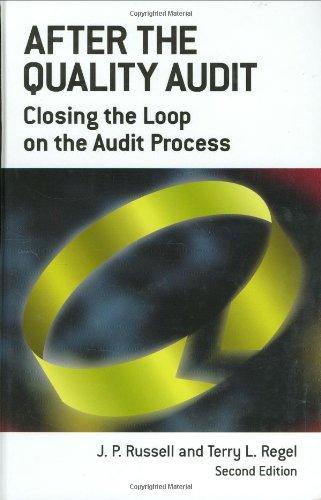Question
Power Corporation acquired 100 percent ownership of Upland Products Company on January 1, 20X1, for $240,000. On that date, Upland reported retained earnings of $66,000
| Power Corporation acquired 100 percent ownership of Upland Products Company on January 1, 20X1, for $240,000. On that date, Upland reported retained earnings of $66,000 and had $108,000 of common stock outstanding. Power has used the equity-method in accounting for its investment in Upland. |
| The trial balances for the two companies on December 31, 20X5, appear below. |
| Power Corporation | Upland Products Company | |||||||||
| Item | Debit | Credit | Debit | Credit | ||||||
| Cash & Receivables | $ | 51,000 | $ | 73,000 | ||||||
| Inventory | 268,000 | 98,000 | ||||||||
| Land | 88,000 | 88,000 | ||||||||
| Buildings & Equipment | 508,000 | 158,000 | ||||||||
| Investment in Upland Products Stock | 260,600 | |||||||||
| Cost of Goods Sold | 128,000 | 58,000 | ||||||||
| Depreciation Expense | 33,000 | 23,000 | ||||||||
| Inventory Losses | 23,000 | 11,400 | ||||||||
| Dividends Declared | 38,000 | 18,000 | ||||||||
| Accumulated Depreciation | $ | 213,000 | $ | 121,000 | ||||||
| Accounts Payable | 68,000 | 28,000 | ||||||||
| Notes Payable | 216,000 | 40,400 | ||||||||
| Common Stock | 308,000 | 108,000 | ||||||||
| Retained Earnings | 351,600 | 98,000 | ||||||||
| Sales | 208,000 | 132,000 | ||||||||
| Income from Subsidiary | 33,000 | |||||||||
| $ | 1,397,600 | $ | 1,397,600 | $ | 527,400 | $ | 527,400 | |||
| Additional Information: |
| 1. | On the date of combination (five years ago), the fair value of Uplands depreciable assets was $66,000 more than the book value. Accumulated depreciation at that date was $10,000. The differential assigned to depreciable assets should be written off over the following 10-year period. |
| 2. | There was $18,000 of intercorporate receivables and payables at the end of 20X5. |
| Required: |
| a. | Prepare all journal entries that Power recorded during 20X5 related to its investment in Upland. (If no entry is required for a transaction/event, select "No journal entry required" in the first account field.)
|
Step by Step Solution
There are 3 Steps involved in it
Step: 1

Get Instant Access to Expert-Tailored Solutions
See step-by-step solutions with expert insights and AI powered tools for academic success
Step: 2

Step: 3

Ace Your Homework with AI
Get the answers you need in no time with our AI-driven, step-by-step assistance
Get Started


